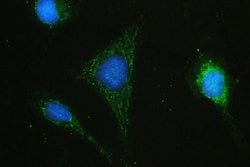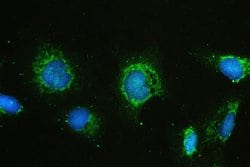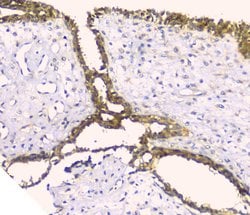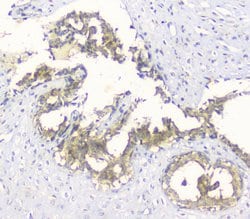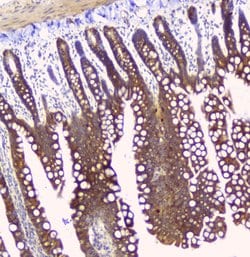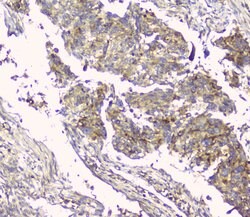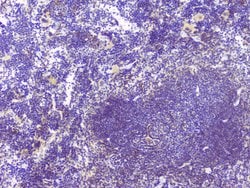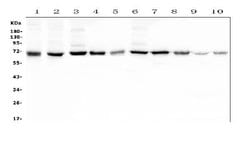Learn More
Invitrogen™ HAS1 Polyclonal Antibody
Rabbit Polyclonal Antibody
Supplier: Invitrogen™ PA595599
Description
Reconstitute with 0.2 mL of distilled water to yield a concentration of 500 μg/mL. Positive Control - WB: human SHG-44 whole cell, human THP-1 whole cell, rat brain tissue, rat smooth muscle tissue, rat ovary tissue, mouse brain tissue, mouse smooth muscle tissue, mouse ovary tissue, mouse small intestine tissue, mouse Neuro-2a whole cell. IHC: human lung cancer tissue, human mammary cancer tissue, human mammary cancer tissue, mouse spleen tissue, rat small intestine tissue. ICC/IF: U20S cell, U20S cell . Store at -20°C for one year from date of receipt. After reconstitution, at 4°C for one month. It can also be aliquotted and stored frozen at -20°C for six months. Avoid repeated freeze-thaw cycles.
Hyaluronic acid is a high molecular weight unbranched polysaccharide synthesized by a wide variety of organisms from bacteria to mammals, and is a constituent of the extracellular matrix. It consists of alternating glucuronic acid and N-acetylglucosamine residues that are linked by beta-1-3 and beta-1-4 glycosidic bonds. HA is synthesized by membrane-bound synthase at the inner surface of the plasma membrane, and the chains are extruded through pore-like structures into the extracellular space. It serves a variety of functions, including space filling, lubrication of joints, and provision of a matrix through which cells can migrate. HA is actively produced during wound healing and tissue repair to provide a framework for ingrowth of blood vessels and fibroblasts. Changes in the serum concentration of HA are associated with inflammatory and degenerative arthropathies such as rheumatoid arthritis. In addition, the interaction of HA with the leukocyte receptor CD44 is important in tissue-specific homing by leukocytes, and overexpression of HA receptors has been correlated with tumor metastasis. HAS1 is a member of the newly identified vertebrate gene family encoding putative hyaluronan synthases, and its amino acid sequence shows significant homology to the hasA gene product of Streptococcus pyogenes.
Specifications
| HAS1 | |
| Polyclonal | |
| Unconjugated | |
| Has1 | |
| HA synthase 1; HAS; Has1; huHAS1; Hyaluronan synthase 1; hyaluronan synthase1; hyaluronate synthase 1; Hyaluronic acid synthase 1 | |
| Rabbit | |
| Affinity chromatography | |
| RUO | |
| 15116, 282821, 3036 | |
| -20°C | |
| Lyophilized |
| Immunohistochemistry (Paraffin), Western Blot, Immunocytochemistry, Western Blot | |
| 500 μg/mL | |
| PBS with 4mg trehalose and no preservative | |
| Q61647, Q92839 | |
| Has1 | |
| A synthetic peptide corresponding to a sequence of human HAS1 (NRAEDLYMVDMFREVFADEDPATYVWDGNYHQPWEPA). | |
| 100 μg | |
| Primary | |
| Human, Mouse, Rat | |
| Antibody | |
| IgG |
Your input is important to us. Please complete this form to provide feedback related to the content on this product.
